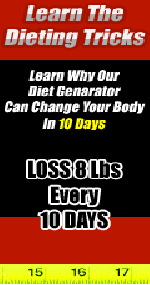Rethinking Thin: The New Science of Weight Loss—and the Myths and Realities of Dieting
A New York Times Book Review Editors’ Choice. In this eye-opening report, New York Times science writer Gina Kolata shows that our society’s obsession with dieting is less about keeping trim and staying heal. . . More >>
Rethinking Thin: The New Science of Weight Loss—and the Myths and Realities of Dieting







This book should be kept far away from the non-fiction section. It is completely ridiculous how many people will go out of their way to blame everything for their fat besides themselves. If anyone would take just one day to research calorie content in different foods and how many calories are burned in certain activities they would understand why so many people are obese. Genetics play a part in your body structure and how much fat you can store, but your genetic makeup does not determine how fat you are going to be. I know some of your morbidly obese people think that the DIET COKE will cancel out the double quarter pounder and large fries you had for brunch but it won’t. I understand all of this because I made a life change. I was 215 on a 5′9″ frame when I graduated High School. A year later I droped down to 145 lbs. No pills, no drugs, I just ran every other day, substituted my bacon cheeseburger for a green salad with a little bit of FAT FREE dressing (ranch doesn’t cut it). So, for all of you people wanting to blame your fat on your genetics go ahead and read this and I’m sure she can give you some brainwashing points. For everyone else, maybe some people that would like to live a few extra years, find a book that encourages excercise and sensible eating. It’s a lifetime not a fad.
Rating: 1 / 5
This has to be one of the driest most boring books I’ve read in a long time. The content is interesting, but he author is unable to express it in an interesting format at all.
Rating: 3 / 5
Kolata writes about our society’s obsession with dieting and weight loss and it’s place within the weight loss industry. Follow along as the author shows the pit falls and progress of four determined dieters.
Rating: 5 / 5
The author describes, over several chapters, the history of dieting and obesity studies. These sections are fascinating.
But the majority of the book is flawed. The author “follows” the subjects of a diet study performed at Penn State. I am not sure why this particular diet study was chosen–but the choice was a preordained failure. The study compared two-year trials of two poor diets–the Atkins diet and a low-calorie diet named “LEARN”. Why did she not choose a diet study that holds more promise?
There are diet-lifestyle approaches out there that work–wonderful books have been written on them, by John McDougall, Colin Campbell, Tom Robbins, Caldwell Esselstyn, Dean Ornish, Gabe Mirkin, Joel Fuhrman, and others. These approaches are backed by a growing body of high-quality scientific research. Why did Kolata neglect to mention any of them? Why did she focus on the approaches that are well known not to work?
Rating: 1 / 5
About: Follows several dieters through a two-year weight loss study as well as describes other research about how tough it is to lose weight.
Pros: A good “other side of the coin” book in response to the obesity “epidemic”. Recommended for anyone who has ever tried to lose weight.
Cons: Would have liked to see pictures of graphs described in studies, rather than just descriptions. I can’t help but wonder if the articles described were cherry-picked
Grade: A
Rating: 4 / 5